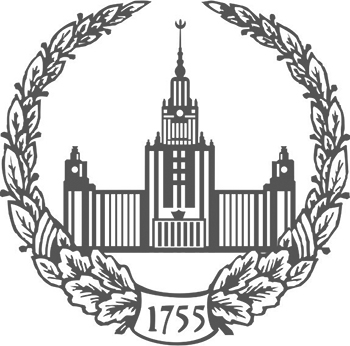Department of Russian History in the 20th and 21st Centuries, Faculty of History
-
“Health Now!”: Komsomol and Physical Culture in 1923–1926 (According to the Features in Komsomol’skaya Pravda)Moscow University Bulletin. Series 8: History 2021. N 4. p.61-87read more1158
-
The aim of the article is to study how the theoretical guidelines of the leaders of the Soviet medicine and physical culture movement in 1923– 1926, especially N.A. Semashko, were practiced among young people and how the Komsomol participated in this process. In that period the foundations of the organization of the mass physical culture and sports movement were laid under the guidance of medical workers, and the main emphasis was placed on improvement of the health of the population in general and the health of young people in particular through scientifi c research and medical control. The experience gained in those years formed the basis for the subsequent offi cial policy of promoting physical education and sport among the population. By trial and error, the basic principles of the organization of the physical culture movement in the country were worked out through introducing amateur physical culture circles in enterprises, institutions and schools. The Komsomol was supposed to be involved in order to ensure control over the movement and take a leading role in the clubs. A number of important questions were also raised and resolved during this period, such as the permissibility of competitions and sports in Soviet physical education, the shortage of qualifi ed personnel and relevant equipment. The joint eff orts of the All-Union Council on Physical Culture under the All-Union Central Executive Committee of the RSFSR and the Komsomol bore fruit by the end of the period indicated, when the number of participants in the physical culture movement signifi cantly increased. At this stage Soviet sport was not yet the sport of great achievements and world records, but over time a network of amateur physical education groups covering the whole country was established. It helped to identify talented athletes at a young age and to make physical education and sport a part of the Soviet way of life for everyone.
Keywords: physical education and sport; Councils of Physical Education; Komsomol cells; N.A. Semashko; physical education circles; football in the USSR; medical supervision
-
-
Personnel matter in the Soviet physical culture movement from 1918 through 1930Moscow University Bulletin. Series 8: History 2023. N 2. p.75-96read more1207
-
The personnel matter in the physical culture movement from 1918 through 1930 has not yet practically become the object of special study, despite the fact that the success of this movement which was given an important role in education of “new man” and mobilization of labor resources in Soviet state depended to a large extent on solving the staffing problem. The article presents a comprehensive analysis of this problem in the above-mentioned period. The author examines patterns in the qualitative and quantitative changes in the cadre of instructors, as well as identifies the factors that influenced this process. An acute shortage of instructors (coaches) was a characteristic phenomenon in these years. Since physical education was to become one of the most important tools of education in the spirit of communist ideals and at the same time a method of restoring the health of the population, it was necessary to make the physical culture movement a mass movement, and therefore it required a large instructor staff. According to the materials reviewed, there were a number of problems on the way to achieve large-scale participation. The principal one was financial, so the number of educational institutions and courses grew extremely slowly, and the instructors were often not interested in high quality work. Another problem was the social composition of the instructor cadres, since physical education, according to Soviet ideologists, could not be apolitical and exist for the sake of sports achievements. The situation was aggravated by the inconsistency of the work of various departments and organizations. All these facts taken together led the Soviet leadership to the conviction that the problem could not be solved without strict regulation and control of personnel training, as well as large-scale financial support. The system of management of the physical culture movement was radically rebuilt, and the shortage of personnel was comprehensively solved due to the decisions of the Party and the Soviet government, Komsomol and trade unions in 1929 and 1930.
Keywords: Soviet physical culture; physical culture instructors; physical culture circles; Komsomol; Soviet trade unions; Councils of Physical Culture; physical culture institutes and technical schools
-
-
The Trip of Football Players from Kharkov to Germany in 1925 in the Context of the Development of International Sports RelationsMoscow University Bulletin. Series 8: History 2024. Vol.65. N 5. p.97-117read more352
-
The objective of this study is to characterize the mechanisms and goals of the establishment and development of international relations of the Soviet physical culture movement in the first half of the 1920s as a significant component of cultural diplomacy. The focus is on international sports meetings in which Soviet athletes participated abroad, with a particular emphasis on the 1925 trip of Kharkov footballers, which was of special signifi cance. The growing interest among researchers in the issues of cultural diplomacy is evident, with the majority of works focusing on the USSR’s confrontation with the capitalist world in the sports sphere during the Cold War. However, it was in the 1920s that the institutional foundations of Soviet sport and the forms of its interaction with the outside world were formed. A distinctive characteristic of the period under consideration is the class approach to sport, within the framework of which the working-class physical culture movement was opposed to the bourgeois one. The primary objective of fostering proletarian sports was to cultivate combatants for imminent revolutionary confrontations. International sports meetings between Soviet and foreign proletarian athletes were primarily a means of forging closer ties with them in order to attract them to the Soviet side and thereby expand the ranks of the communist forces, so the actual results of sports competitions were not so important. A further distinctive characteristic of this period was the presence of two organizations, Red Sports International and the Supreme Council of Physical Culture, which were responsible for coordinating interactions with foreign workers’ teams. However, these two entities oft en experienced discord, resulting in the disruption or inadequate promotion of international events. The 1925 football tour of the Kharkov team to Germany represented a pivotal moment in the development of international relations. This event provided the Soviet leadership with a valuable insight into the potential political benefits of triumphing in international sporting competitions, should these victories be accompanied by a well-executed propaganda campaign. Subsequently, these events would be used to enhance the prestige of the USSR in the eyes of the world community.
Keywords: Red Sports International, Comintern, Supreme Council of Physical Culture, Soviet sport, I.A. Zholdak, football
-



